Jacksonville, Fl. — The “Buresh Bottom Line”: Always be prepared!.....First Alert Hurricane Survival Guide... City of Jacksonville Preparedness Guide... Georgia Hurricane Guide.
STAY INFORMED: Get the * FREE * First Alert Weather app
FREE NEWS UPDATES, ALERTS: Action News Jax app for Apple | For Android
WATCH “Preparing for the Storm”
WATCH “The Ins & Outs of Hurricane Season”
READ the First Alert Hurricane Center “Survival Guide”
LISTEN & WATCH “Surviving the Storm” - WOKV Radio & Action News Jax
***** ALWAYS CHECK & RE-CHECK THE LATEST FORECAST & UPDATES! *****
REMEMBER WHEN A TROPICAL STORM OR HURRICANE IS APPROACHING: Taping windows is *NOT* helpful & will not keep glass from breaking.
Realize the forecast cone (”cone of uncertainty”) is the average forecast error over a given time - out to 5 days - & *does not* indicate the width of the storm &/or damage that might occur.
** FIRST ALERT! ** - Anyone living in - or traveling to - the Caribbean, Gulf of Mexico, Yucatan Peninsula &/or the U.S. Gulf Coast should stay up to date on the latest forecast for a storm likely to develop over the Caribbean then a move over the Gulf of Mexico **
** No *inland* impacts from Fiona for Jacksonville/NE Fl./SE Ga.... beaches to be affected by easterly swells, somewhat rough seas/surf & a high rip current risk augmented by onshore flow Fri. into the weekend.... & no impacts from Gaston over the Northeast Atlantic **
Atlantic Basin:
Tropical wave - ‘98-L’ that moved off of Africa last week is moving over the Southern Caribbean & Central Caribbean & has been upgraded to tropical depression #9. This is a classic wave in that it formed from a complex of intense storms over Africa... encountered hostile conditions (shear & dry air) for days before finding more favorable conditions. Some land interaction with the north coast of Colombia & Venezuela plus some shear out of the northeast kept t.d. #9 weak but low pressure managed to form at the surface Thu. followed by a burst of persistent t’storms by Thu. night. As the depression gains some latitude, it would appear most ingredients are in place for the development of a tropical cyclone over the Central &/or Western Caribbean.
The global forecast models present a serious conundrum with a wide spray of where the storm might go. However, modeling does at least agree that there will be development. Both the GFS & European models are initializing well which is a positive... the GFS does seem better on the more west & south track the last 24-36 hours, but there may be a “jump” of sorts to the north, even northwest as the t’storms become more concentrated & a center evolves. Agreement between the models is o.k. at first with a slowly developing tropical cyclone over the Western &/or Northern Caribbean but the range in the longer term - next week - is large to say the least. The GFS remains farthest to the west but has shifted in a big way to the east... is slower by about 24 hours & recently shows a big slow down near Fl. missing an upper level trough moving over the W. Atlantic next week. The GFS is now as far east as the west coast of Fl. (close or east of where the model was earlier in the week) but stronger with the extra day over the Gulf. The European model, on the other hand, is faster & has trended east now seemingly settling on the SW coast of Fl. near the Everglades. Because of the sharper turn north, the European is earlier to a U.S. landfall - Tue. night & is, therefore, weaker with less time over warm water after a cut northward across Central/Western Cuba. Once across S. Fl., the European takes #9 northward to near the N. Carolina outer banks followed by a very close call for the Mid Atlantic & Northeast U.S. The difference in the models next week is hundreds of miles that becomes thousands of miles! The UKMET model has not been very good this season so far but for what it’s worth, the model leans toward the GFS solution but is a little between the GFS & European models on the west coast of Fl. near/just south of Tampa late Wed. more in line - speed wise - with the GFS but weaker than either the Euro or GFS.
In any case... ingredients are in place for the development of a tropical storm then hurricane over the Caribbean with very warm water including high oceanic heat content (warm far below the surface of the ocean)... sufficient mid & upper level moisture... low to - at times - moderate shear that will eventually be in concert with the storm’s movement (so less detrimental). Shear does increase by mid to late next week. In the end... the storm’s intensity will come down to how quickly #9 can organize... any land interaction... & how long the tropical cyclone stays over the Gulf vs. moving into Fl. We will have to watch for the possibility of pretty fast intensification near Cuba &/or over the Southeast Gulf where the environment looks especially favorable. It does look like shear & drier mid & upper level air will increase next week closer to Fl. & over the Eastern Gulf.
Hurricane hunter aircraft flew across the SE Caribbean & nearby areas Wed. evening & the weather data was ingested into the 00Z GFS model run, but that has happened since. So - in my opinion - it’s of no help until there is constant surveillance of the surrounding atmosphere that is then incorporated into the analysis data for each model run. I suspect the single run with real-time data is why the GFS had major “hiccups” midweek with a track so far to the west.
Steering currents to consider:
(1) the GFS “won” the forecast battle on Fiona hands down over the European model while the UKMET was consistently out to lunch. Simply based on the “you’re only as good as your last forecast”, it would be very hard to ignore the GFS. Having said that, it’s consistency from one run to the next is seriously lacking. (2) there should be some “extra” ridging underneath - to the south of - intense hurricane Fiona. This alone could result in a more westward track for a bit of a while. But it’s unclear how much ridging will manage to build behind only recently departing Fiona as an upper level trough sweeps across the Eastern U.S. through the weekend. Furthermore... a bit of a weakness or wake trough has lingered behind Fiona south & west all the way to the Caribbean. (3) If t.d. #9 remains weaker & more shallow, it should be steered more by low level (trade) winds vs. the deep tropospheric flow. (4) a tropical storm/typhoon is forming over the W. Atlantic & will move due west to Asia. Perhaps of more importance is a now weakening tropical cyclone that’ turned rather sharply to the northeast & is moving across Japan. A teleconnection implies the more west movement #9 will be short lived followed by the sharp turn north then northeast. (W. Pacific track maps at the bottom). The trough off the east coast of China essentially mirrors the trough near/off the east coast of the U.S. with strong low pressure to the east (Fiona over the Atlantic) followed by another trough to the east.
T.D. #9 will at least stay far to the south of recently hard hit Puerto Rico & Dominican Republic. The time table - *for right now* is Central/Northern Caribbean through the weekend: near Jamaica Sunday... near/crossing Cuba late Mon. into Tue... then the SE Gulf of Mexico mid week. Keep in mind that if the European model verifies then impacts to Florida will be earlier while the GFS solution would still be Florida but later - by at least 24 hours. Still very early on the path & strength of #9. There will be changes, stay up to date!

Spaghetti plots includes ensembles of the models:


Big difference in the models - European Tue. vs GFS Wed.:

Deep oceanic heat content is impressive across the Caribbean - lots of warm water well below the surface of the ocean:
Strong shear over the far Eastern Caribbean weakens a great deal more to the north & west:
Radar imagery from S. Fl. Water Management District:
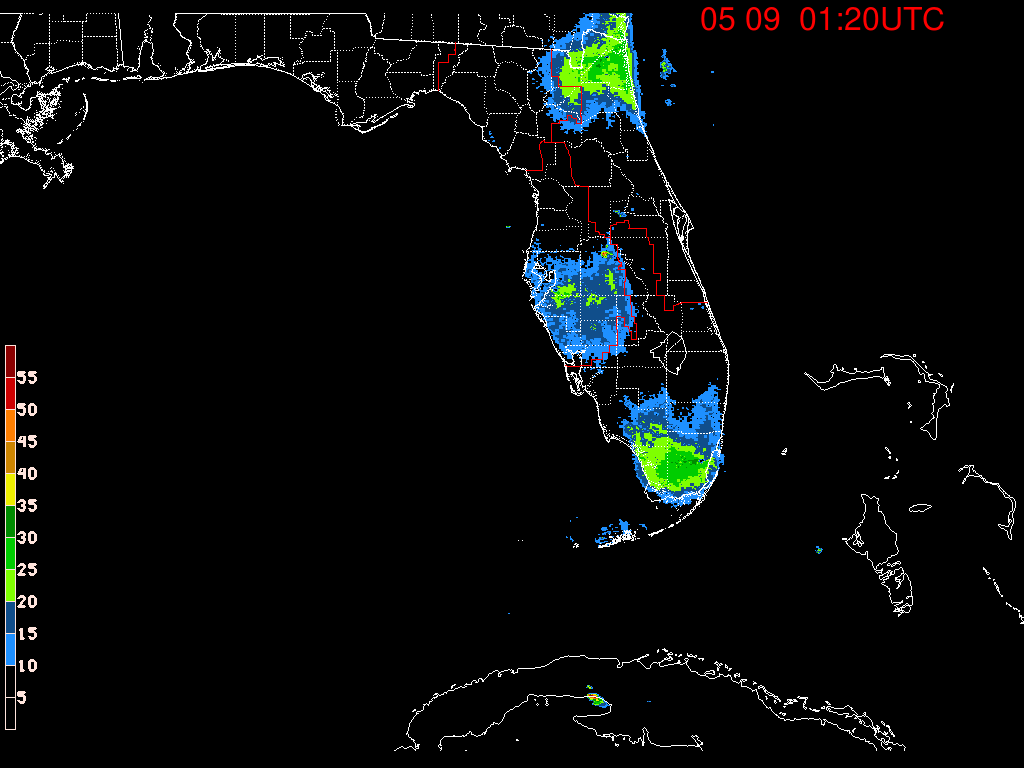
Tropical wave - ‘96-L’ was upgraded to tropical depression #7 Wed. morning then to tropical storm “Fiona” Wed. evening & to a hurricane Sun. morning with a Cat. 1 (85 mph winds) landfall Sunday afternoon about 3:20pm EDT along the southwest coast of Puerto Rico near Punta Tocon followed by another landfall (Cat. 1/90 mph winds) early Mon. at 3:30am EDT along the coast of the Dominican Republic near Boca de Yuma. The hurricane strengthened into a Cat. 2 late Mon. then to a ‘major’ Cat. 3+ hurricane early Tue. - the first major hurricane of the Atlantic season. The avg. date for such an occurrence is Sept. 1.
Fiona’s steering currents are straight forward & locked in (hence, a narrow forecast cone). Tip of the hat to the GFS for winning the model forecast on this one - hands down. An upper level trough moving to New England then the NW Atlantic while the Bermuda high is well to the east providing the distinct alleyway across the W. Atlantic for Fiona. The upper level trough then captures Fiona over the weekend bending the transitioning to a post-tropical low to the north & northwest which has big implications for Nova Scotia & Newfoundland as the low will remain a powerful ocean storm even after losing tropical characteristics. Fiona reached Jacksonville’s latitude - 700-900 miles to the east Thu. afternoon.
Of note - the center moving a little south of due west into the face of the shear - as was the case last Wed./Thu. & parts of Fri. - has led to eventually powerful hurricanes that had a similar trend. And indeed Fiona followed suit reaching Cat. 3 intensity Tue. & a Cat. 4 early Wed.
FIONA SUMMARY/IMPACTS:
* Puerto Rico/U.S. Virgin Islands/nearby Caribbean islands & Dominican Republic: Improving weather & seas but river flooding will last longer with the typical lag between the end of the heaviest rain & the crest of major rivers.
* Impacts to the Southeast Bahamas, especially the Turks & Caicos Islands - in the form of strong winds, heavy rain & rough seas/surf - have diminished. Most of the Central & NW Bahamas made it through Fiona unscathed.
* Impacts for Bermuda - the eye moved west of the island early Fri. with tropical storm force winds, a few hurricane force gusts for Bermuda. Conditions will slowly improve through Fri. night.
* Impacts for Nova Scotia & Newfoundland this weekend (becoming large/strong post-tropical ocean storm) - very heavy rain, strong winds, high seas, very rough surf. Hurricane & Tropical Storm WARNINGS are in effect.
* Moderate to high swells/seas/surf + dangerous rip currents for virtually all of the U.S. east coast through this weekend with Fiona well offshore.





Fiona is encountering higher shear again as the storm starts to feel the effects of a strong upper level trough:
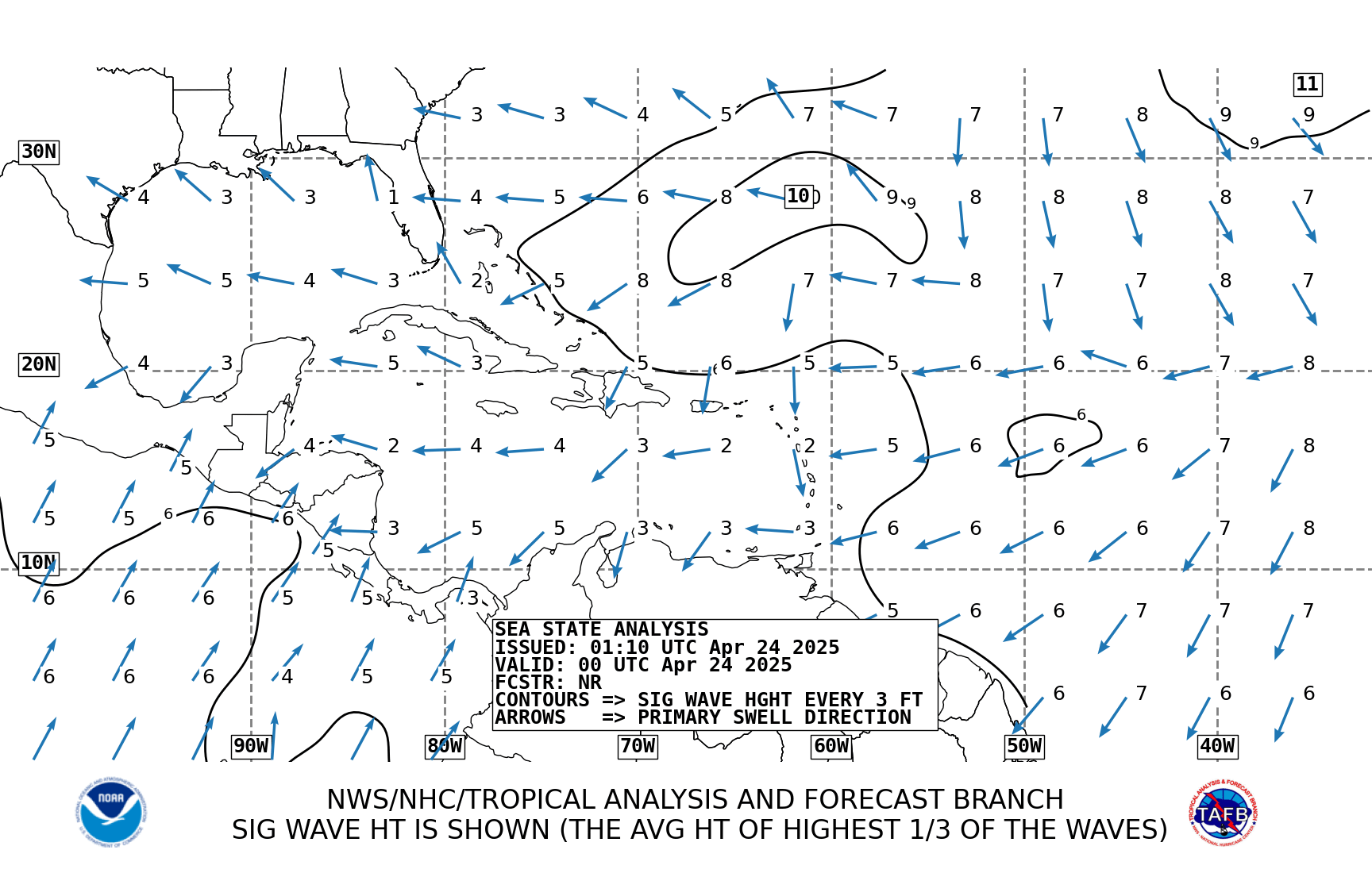
#firstalertwx Saildrone captured amazing new video from inside Category 4 #HurricaneFiona . In partnership with NOAA has 7 ocean drones stationed in the Atlantic Ocean and Gulf of Mexico this season @ActionNewsJax @WOKVNews pic.twitter.com/L0LBg7yfR6
— Mike Buresh (@MikeFirstAlert) September 23, 2022
#firstalertwx pretty amazing #Saildrone video from the northeast quadrant of #HurricaneFiona - Thu. morning, 09/22 pic.twitter.com/1BBqFZKRib
— Mike Buresh (@MikeFirstAlert) September 23, 2022
Hurricane hunter aircraft snapshot of the eye of Fiona early Tue.!:
Elsewhere....
“Gaston” was upgraded Tue. & will stay over the Central & Northeast Atlantic while completing a clockwise loop as the storm weakens & then drifts to the west. Some rough seas/surf, some rain for the Western Azores... no impacts to the U.S.

And there are a couple of active tropical waves over the Eastern Atlantic. There is the potential for some development with the lead wave slowly moving W/NW... followed by a wave near the African coast that’s should turn rather sharply northward soon. Neither wave is expected to be able to make it all the way across the Atlantic.



Water vapor loop shows plenty of mid & upper level moisture (white & green areas) across a good part of the Atlantic Basin:



September origins:
Averages below based on climatology for the Atlantic Basin through September. This season so far is well below avg.:

Wind shear:



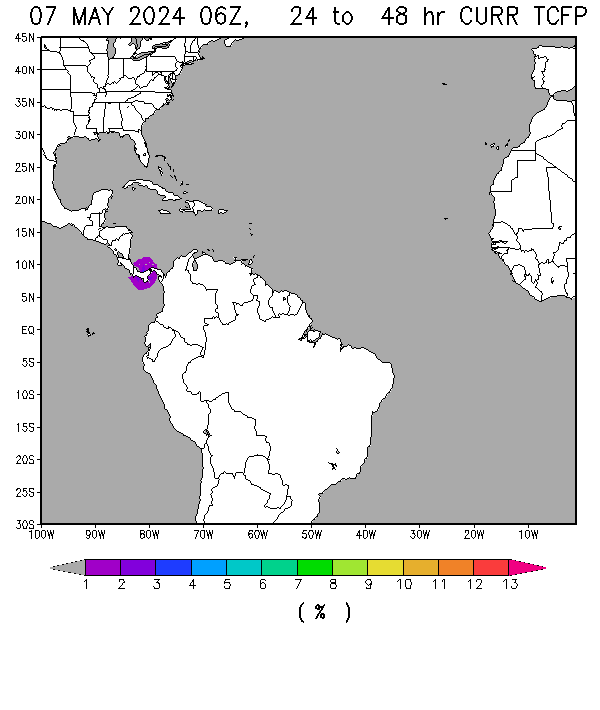
Saharan dust spreads west each year from Africa by the prevailing winds (from east to west over the Atlantic). Dry air - yellow/orange/red/pink. Widespread dust is indicative of dry air that can impede the development of tropical cyclones. However, sometimes “wanna’ be” waves will just wait until they get to the other side of - or away from - the plume then try to develop if other conditions are favorable. In my personal opinion, way too much is made about the presence of Saharan dust & how it relates to tropical cyclones. In any case, we’ve had several large dust plumes spread west to the Caribbean & Gulf with the peak of Saharan dust typically in June & July.
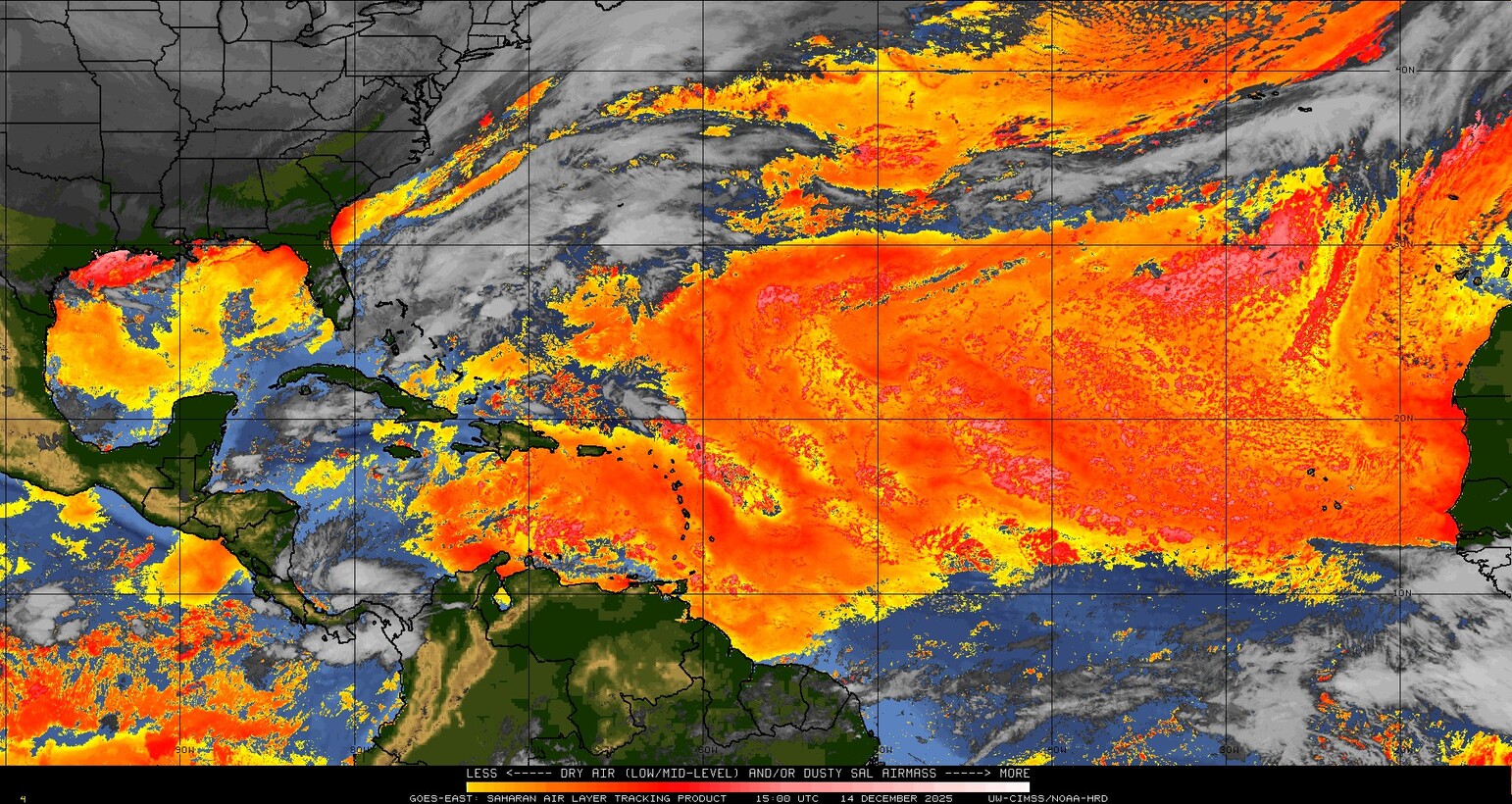
2022 names..... “Hermine” is the next name on the Atlantic list (names are picked at random by the World Meteorological Organization... repeat every 6 years). Historic storms are retired [Florence & Michael in ’18... Dorian in ’19 & Laura, Eta & Iota in ‘20 & Ida in ‘21]). In fact, this year’s list of names is rather infamous with “Charley”, “Frances”, “Jeanne” & “Ivan” retired from the ‘04 list (all hit Fl.) & “Matthew” was retired in 2016. The WMO decided - beginning last year - that the Greek alphabet will be no longer used & instead there will be a supplemental list of names if the first list is exhausted (has only happened three times - 2005, 2020 & 2021). The naming of tropical cyclones began on a consistent basis in 1953. More on the history of naming tropical cyclones * here *.





East Atlantic:





Mid & upper level wind shear (enemy of tropical cyclones) analysis (CIMMS). The red lines indicate strong shear:
Water vapor imagery (dark blue indicates dry air):

Deep oceanic heat content over the Gulf, Caribbean & deep tropical Atlantic:
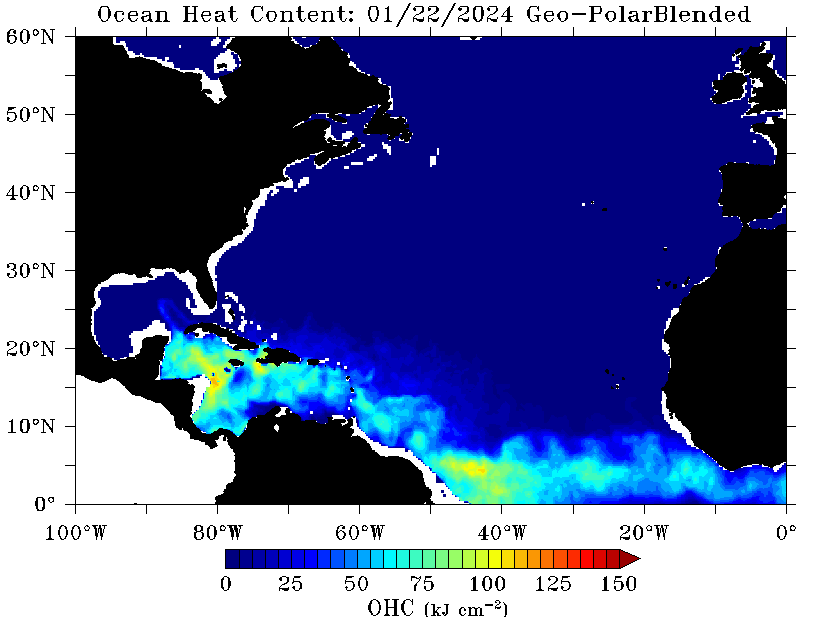
Sea surface temp. anomalies:
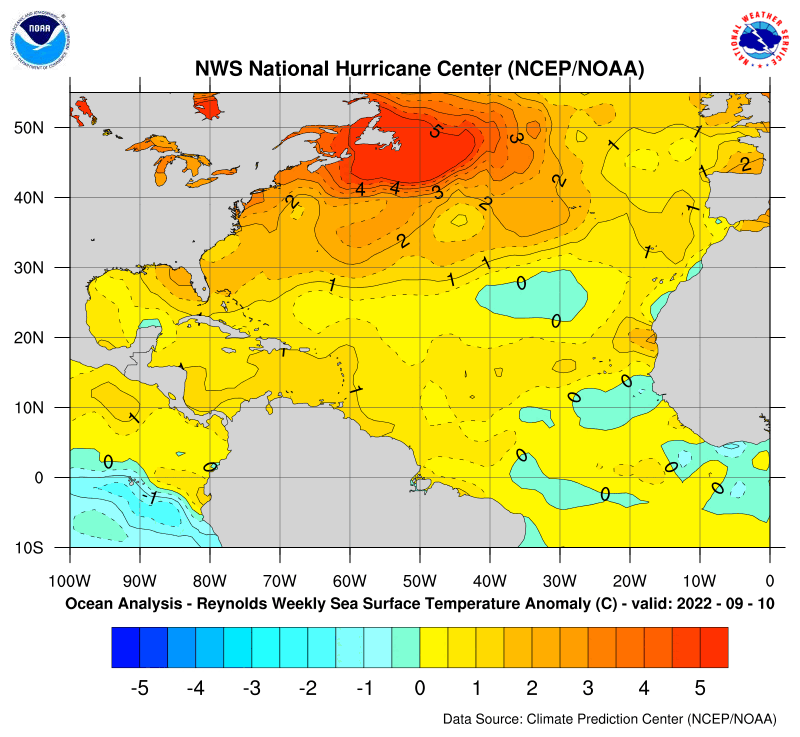

SE U.S. surface map:

Surface analysis centered on the tropical Atlantic:
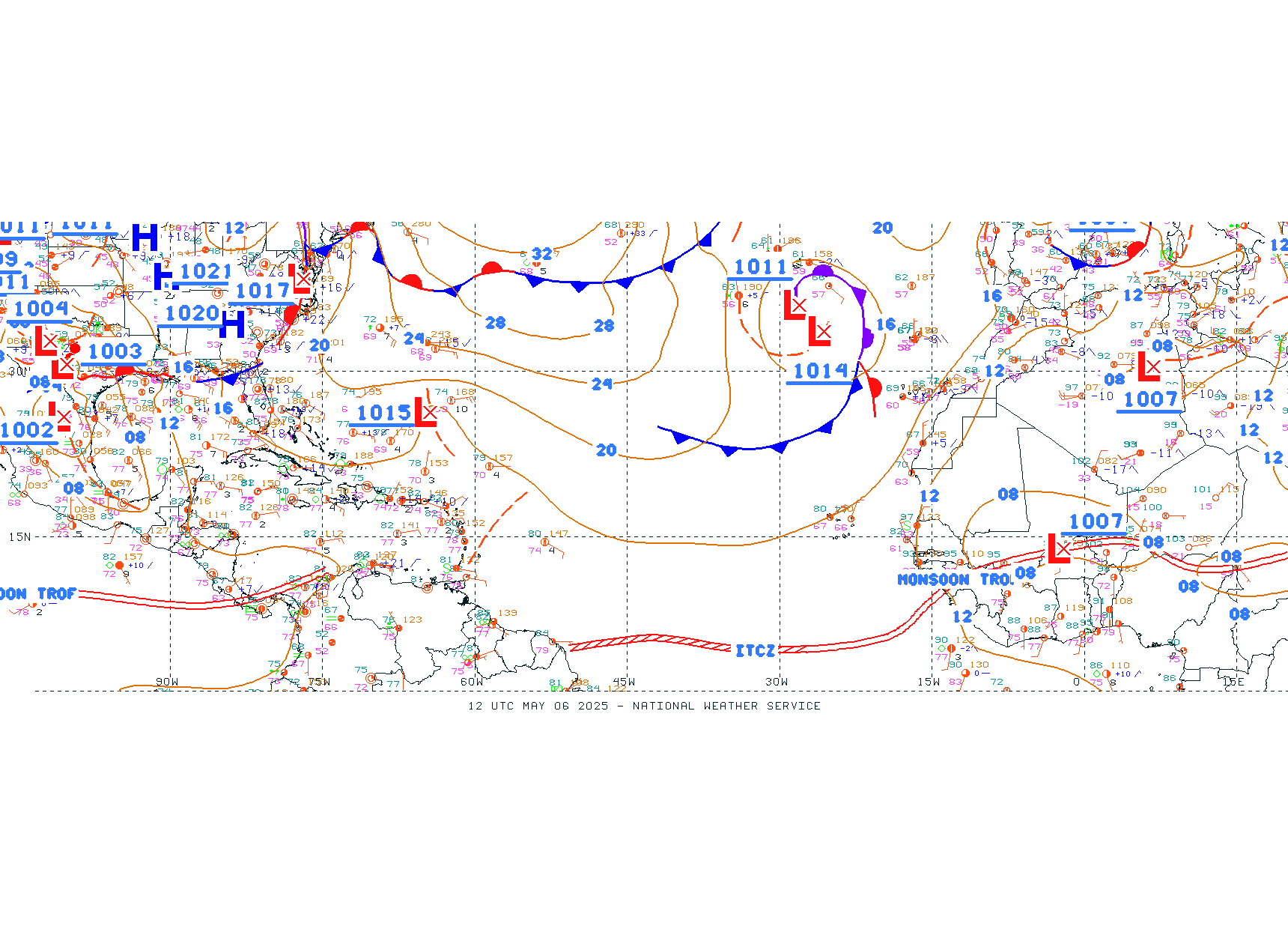
Surface analysis of the Gulf:
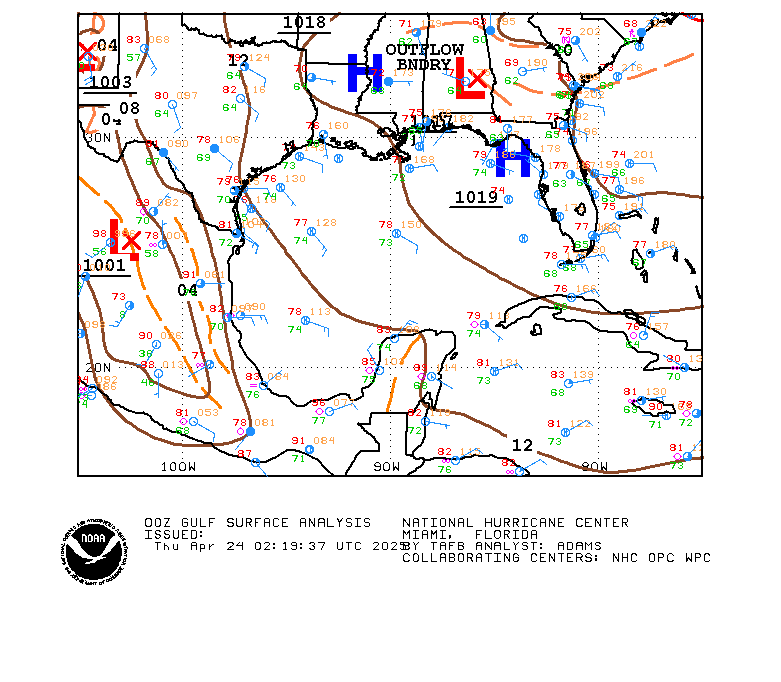
Caribbean:
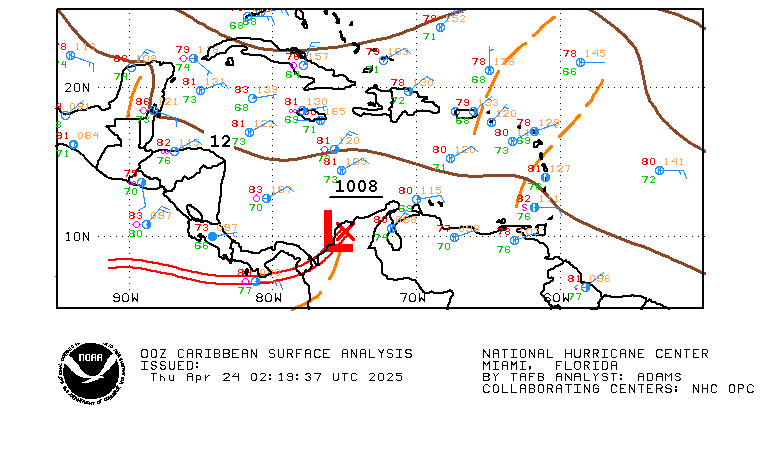
GFS wave forecast at 48 & 72 hours (2 & 3 days):


Atlantic Basin wave period forecast for 24, 48 & 72 hours respectively:
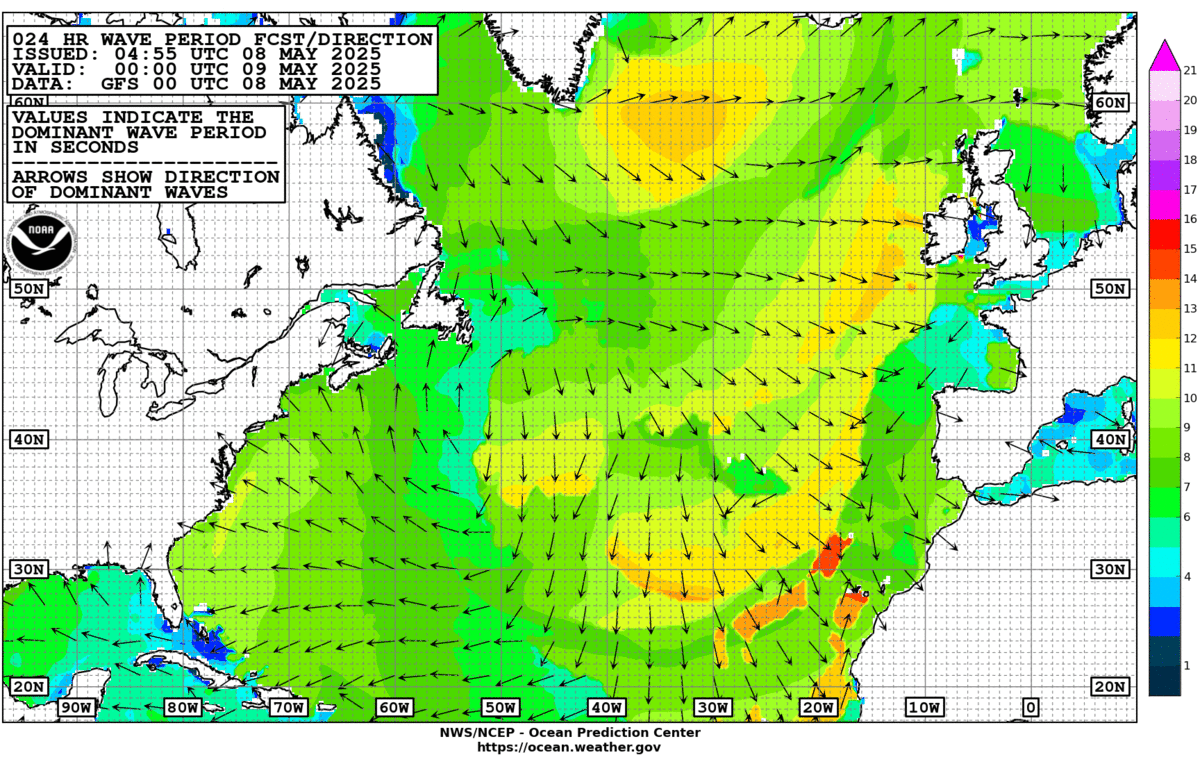
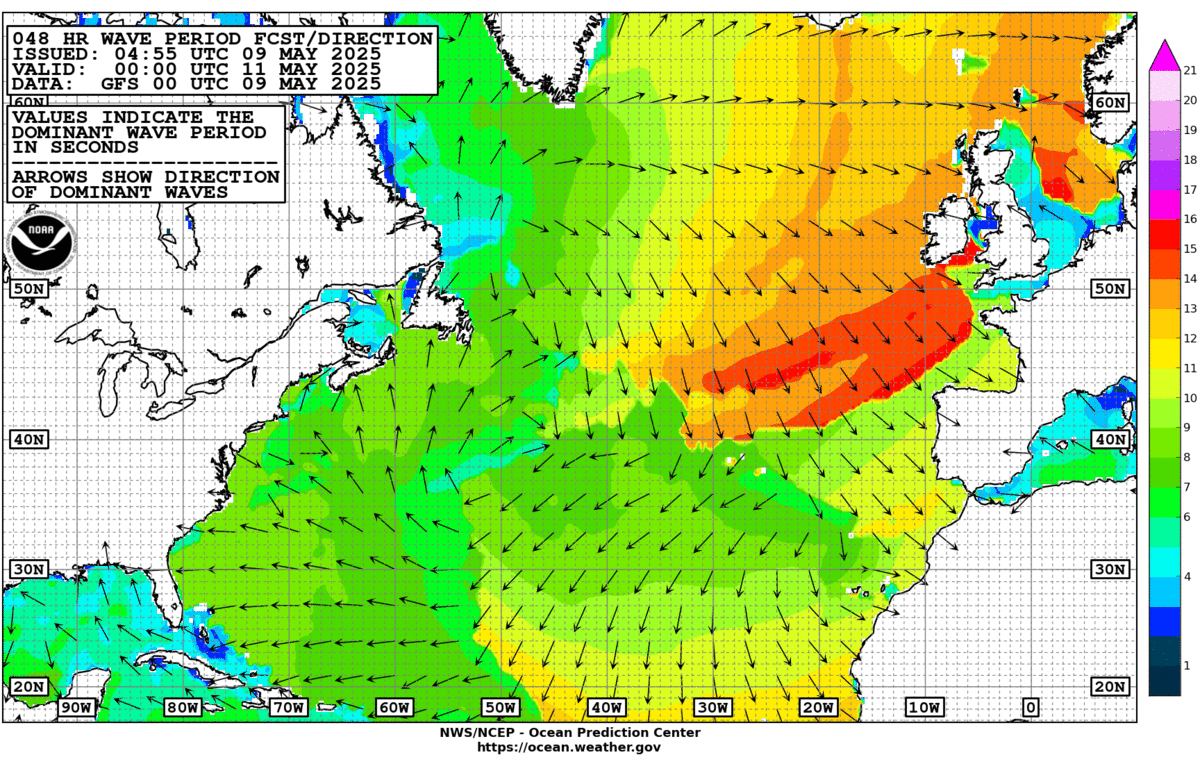
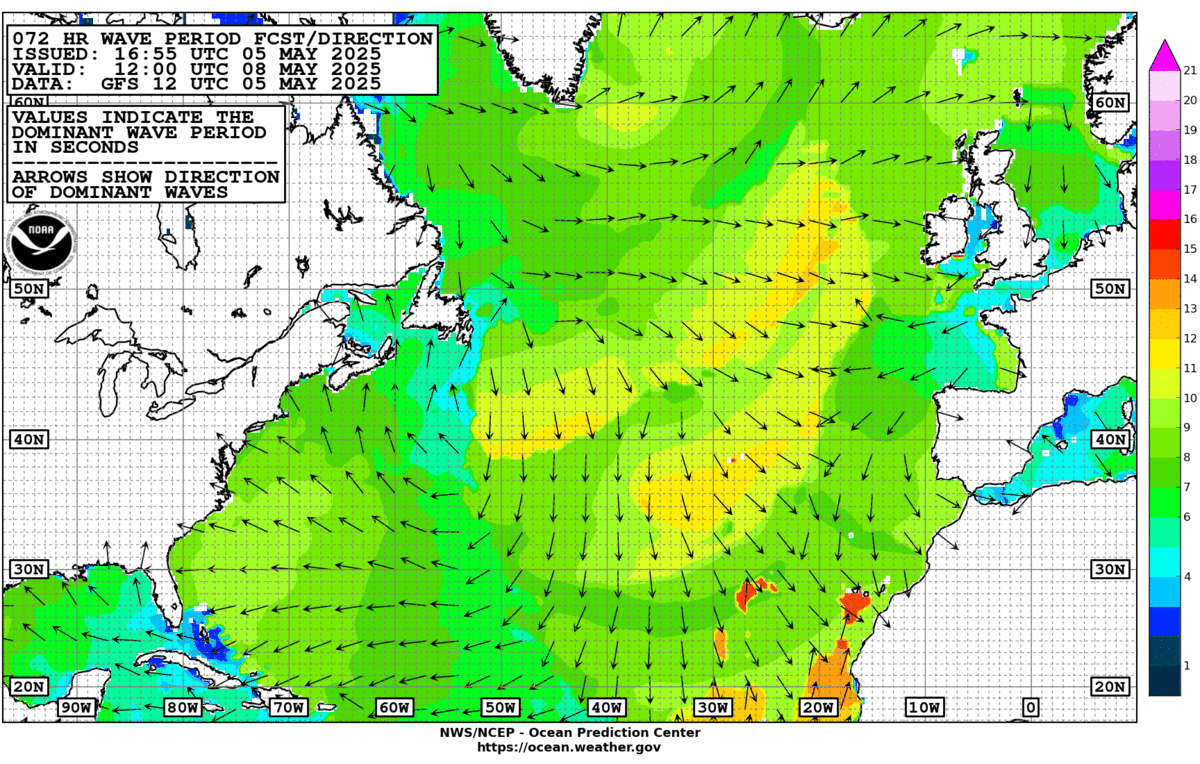
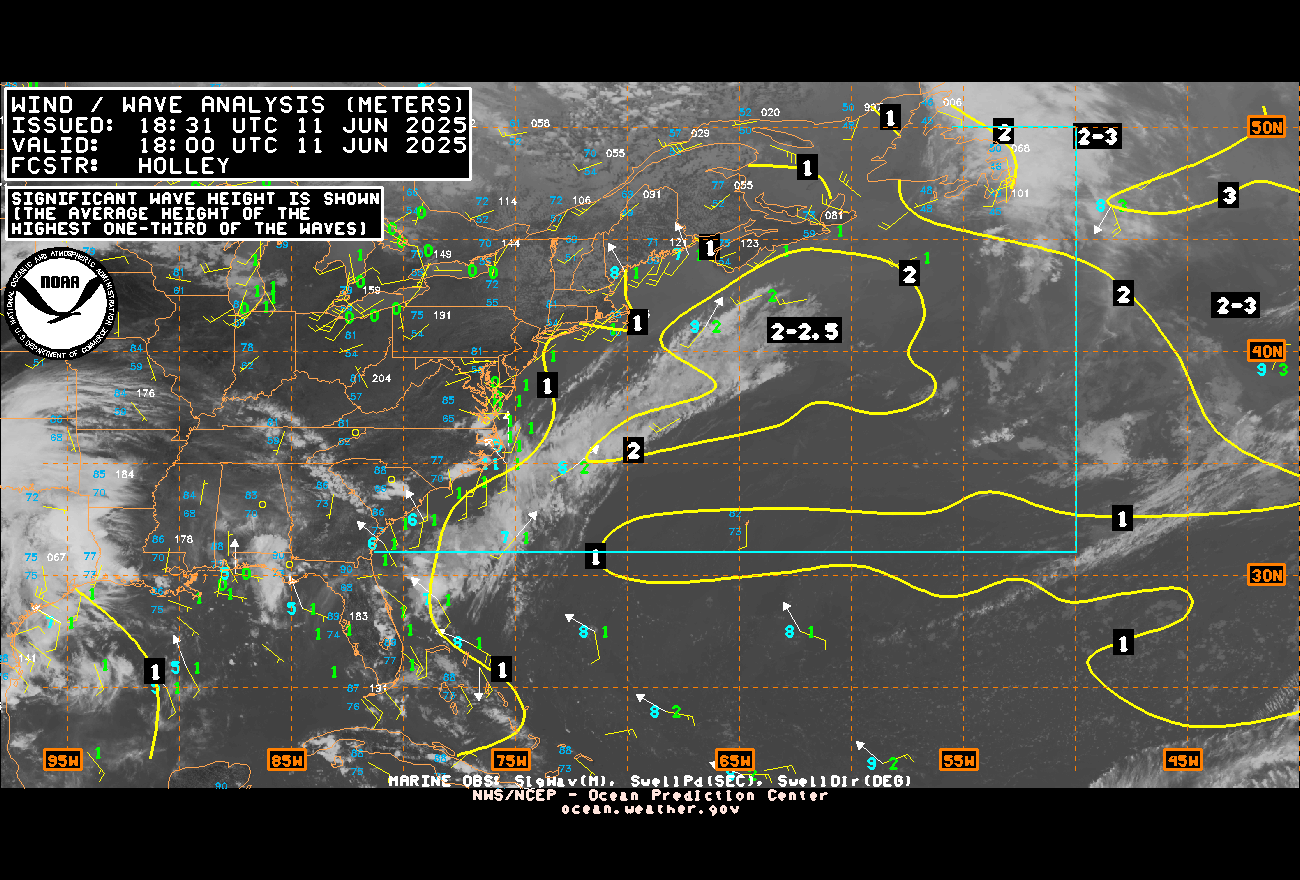
Updated Atlantic seasonal forecast from early Aug. - NOAA & CSU:
The East Pacific:
“Newton” has formed over the E. Atlantic & will move - “by law” (LOL) westward away from the Pacific coast of Mexico:



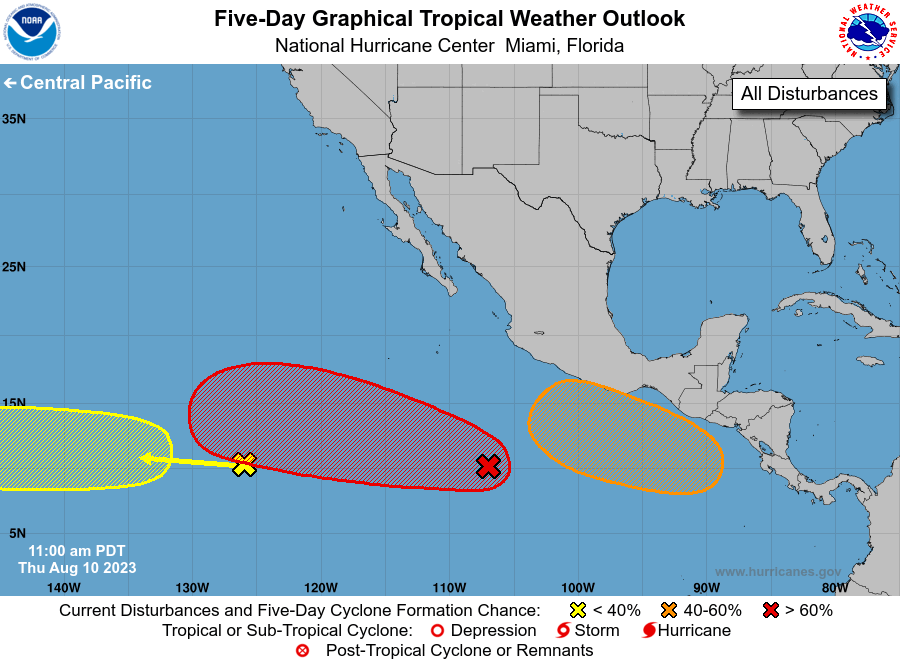
West Pacific:

Global tropical activity:

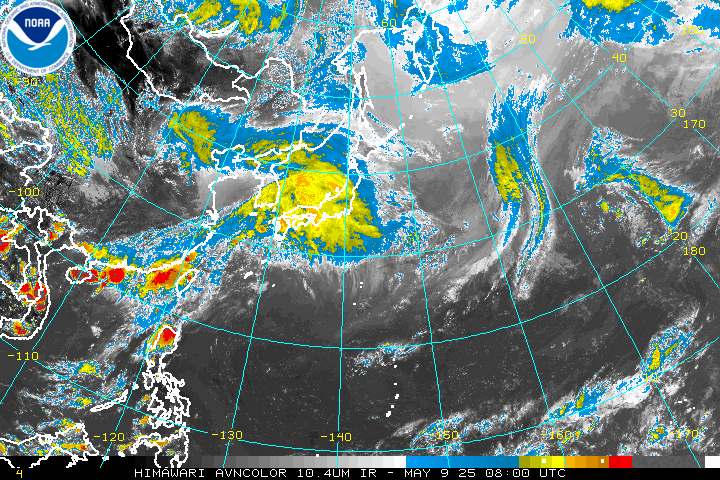
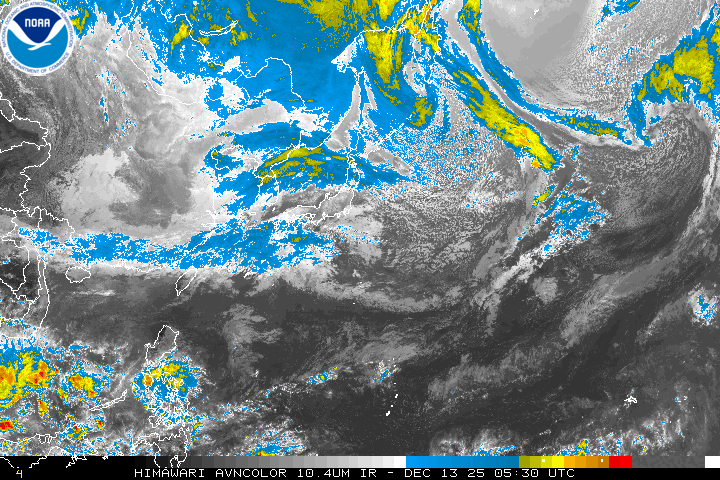
A weakening tropical cyclone is impacting Japan with heavy rain & gusty winds with center to move pretty close to Tokyo Saturday while turning more northeast:

A steadily strengthening tropical cyclone will move west across the Northern Philippines through the weekend then west to Vietnam next week:

Cox Media Group






















